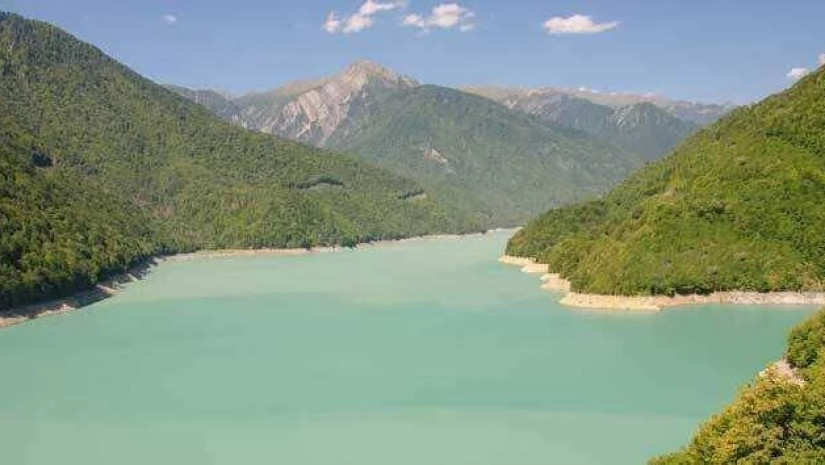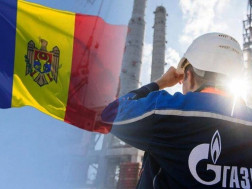“Green” hydrogen – made through the electrolysis of water powered by renewable electricity – has been emerging as the world’s best hope for a clean fuel. It can be blended with natural gas in pipelines and at power plants.
As green hydrogen has no carbon footprint, requiring only water and renewable energy from the sun, wind or hydro to produce, belief is growing that it can help meet the goal of net-zero emissions by 2050 needed to hold global warming below 2C. And the race is on, worldwide, to produce more of it.
In early July, the European Union put scaling up green hydrogen at the centre of Europe’s climate ambition, announcing plans to produce up to a million tonnes of the gas through facilities to be built in the next four years.
It then wants to use hydrogen in those industrial sectors that are otherwise hard to decarbonise, or where electrification is difficult or impossible, between 2030 and 2050. The EU has also launched the European Clean Hydrogen Alliance, with the EBRD as a member.
In early July, in a different part of the world, plans were unveiled to build a $5 billion green hydrogen plant in Saudi Arabia, producing 650 tonnes of green hydrogen a day, enough to run around 20,000 hydrogen-fuelled buses.
Production at the facility – jointly owned by Air Products, the U.S. industrial gas giant, ACWA Power, the Bank’s long-standing client, and Neom, a new mega-city planned in Saudi Arabia – is expected to start in 2025.
Germany’s thyssenkrupp, which will supply the electrolysers for the Saudi factory, is scaling up its manufacturing capacity. Norwegian firm Nel and British ITM Power are also developing electrolyser gigafactories.
Energy giants like ENGIE are exploring repurposing oil and gas platforms near offshore wind farms to produce green hydrogen at sea, and many major oil and industrial players worldwide are rapidly accelerating their investments into green hydrogen production and use.
Now a new player is entering the field. Georgia, in the Caucasus mountains between Russia and Central Asia, has terrain that brings plentiful supplies of fast-flowing mountain water. This already allows it to produce cheap, clean, abundant hydropower, making up 75-80 per cent of its domestic energy mix.
The Georgian government, realising that water currently spilled during the summer months would be put to better use producing hydrogen, has now asked the EBRD to explore the country’s potential for generating green hydrogen which could then be blended and transported to end-users through existing gas pipelines.
The EBRD accepted and, in a deal signed this week, agreed to provide technical cooperation support to assess the investment requirements in Georgia for green hydrogen generation, as well as to upgrade existing assets to transport blended hydrogen to end-users. The technical cooperation will run over the next few years, setting out a timeline for potential investments after that.
The agreement was part of a broader transaction signed between Georgia’s GOGC energy company and the EBRD, to lend the company €217 million to help it refinance a corporate Eurobond in the wake of this year’s Covid-19 slowdown. GOGC provides 20 per cent of Georgia’s electricity and is the main government entity ensuring the reliability of gas supplies in the country.
“Georgia is making a very timely move in terms of utilising its hydro potential and future-proofing its gas infrastructure to accept low carbon fuels. We are pleased to support them with these first steps,” said Aida Sitdikova, Director and Head of Energy Eurasia, in the EBRD’s Sustainable Infrastructure Group.
Hydrogen has a way to go before its clean version can go mainstream. Most hydrogen used industrially today – “black” or “grey” or “blue” – is made from fossil fuels and needs expensive carbon capture technology or other emerging solutions to mitigate rather than worsen climate change. For now, even that hydrogen is more expensive than natural gas.
Green hydrogen is still expensive too. But its supporters point to the sharp price falls that have been seen in solar and wind-powered energy over the past 15 years, which have made these once-costly renewables cost-competitive with fossil fuels, and say a similar price drop with green hydrogen is now a matter of “when” not “if”.
“Technology moves, and the cost is going down, and we will probably see the same pattern with green hydrogen as we did with solar power. Those that start early will have advantages; they will be prepared with the latest technology evolution,” said David Managadze, Regional Energy Head for Energy Eurasia in the EBRD’s Sustainable Infrastructure Group.
How much Georgia’s pipelines will need to be upgraded to carry hydrogen along with its existing gas will be part of the investigation, added the operation leader for the project, Ross Palmer. But he noted that “it is our role to support our countries and clients to get ready for disruptive technologies of the future.”
Does Georgia have the institutional capacity to handle such an innovative programme? Ms Sitdikova, who noted that Georgia has demonstrated strong progress in building its institutions following strong reforms early in the 21st century, said:
“It’s all very early days and still innovative, as it would be for any country. But we feel the Georgian government is receptive and proactive. Georgia was the first country in the EBRD region to request our assistance with development of green hydrogen. We believe that at this level of political buy-in there is a good chance of successfully completing this preparatory work and looking at specific projects sometime down the road.”
“Georgia is most relevant in terms of the availability of cheap hydro that is otherwise wasted. And the futureproofing of their infrastructure to be able to accept hydrogen as a blended fuel is something we should be supporting and doing more of.”
















